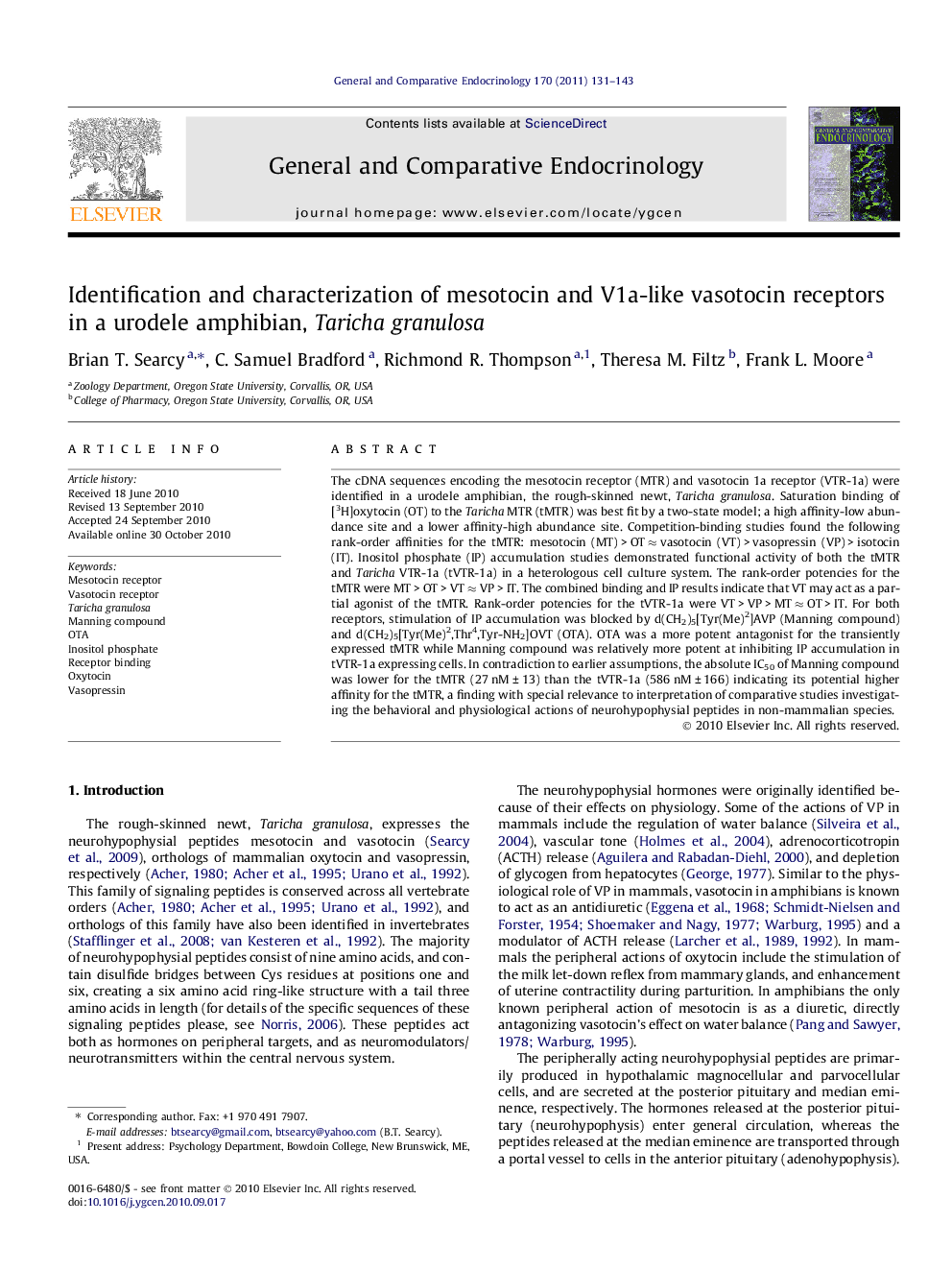| Article ID | Journal | Published Year | Pages | File Type |
|---|---|---|---|---|
| 2801048 | General and Comparative Endocrinology | 2011 | 13 Pages |
The cDNA sequences encoding the mesotocin receptor (MTR) and vasotocin 1a receptor (VTR-1a) were identified in a urodele amphibian, the rough-skinned newt, Taricha granulosa. Saturation binding of [3H]oxytocin (OT) to the Taricha MTR (tMTR) was best fit by a two-state model; a high affinity-low abundance site and a lower affinity-high abundance site. Competition-binding studies found the following rank-order affinities for the tMTR: mesotocin (MT) > OT ≈ vasotocin (VT) > vasopressin (VP) > isotocin (IT). Inositol phosphate (IP) accumulation studies demonstrated functional activity of both the tMTR and Taricha VTR-1a (tVTR-1a) in a heterologous cell culture system. The rank-order potencies for the tMTR were MT > OT > VT ≈ VP > IT. The combined binding and IP results indicate that VT may act as a partial agonist of the tMTR. Rank-order potencies for the tVTR-1a were VT > VP > MT ≈ OT > IT. For both receptors, stimulation of IP accumulation was blocked by d(CH2)5[Tyr(Me)2]AVP (Manning compound) and d(CH2)5[Tyr(Me)2,Thr4,Tyr-NH2]OVT (OTA). OTA was a more potent antagonist for the transiently expressed tMTR while Manning compound was relatively more potent at inhibiting IP accumulation in tVTR-1a expressing cells. In contradiction to earlier assumptions, the absolute IC50 of Manning compound was lower for the tMTR (27 nM ± 13) than the tVTR-1a (586 nM ± 166) indicating its potential higher affinity for the tMTR, a finding with special relevance to interpretation of comparative studies investigating the behavioral and physiological actions of neurohypophysial peptides in non-mammalian species.
Research highlights► Both the mesotocin and V1a-like vasotocin receptors were cloned in Taricha granulosa. ► Manning compound, a frequently used antagonist of the vasotocin system in comparative studies, is a non-selective antagonist of both the mesotocin and V1a-like vasotocin receptor in T. granulosa. ► Vasotocin may act as a partial agonist of the mesotocin receptor in T. granulosa, similar to vasopressin and the oxytocin receptor in mammals. ► A phylogenetic analysis aligns each of the four identified T. granulosa neurohypophysial peptide receptors with each of the four subclasses in mammals.
